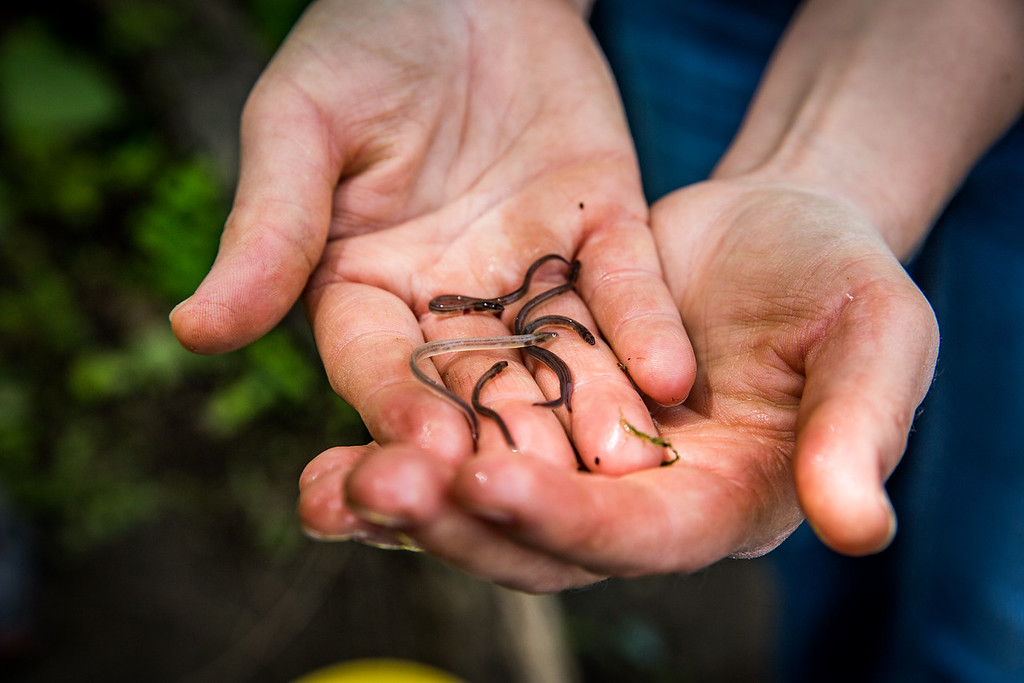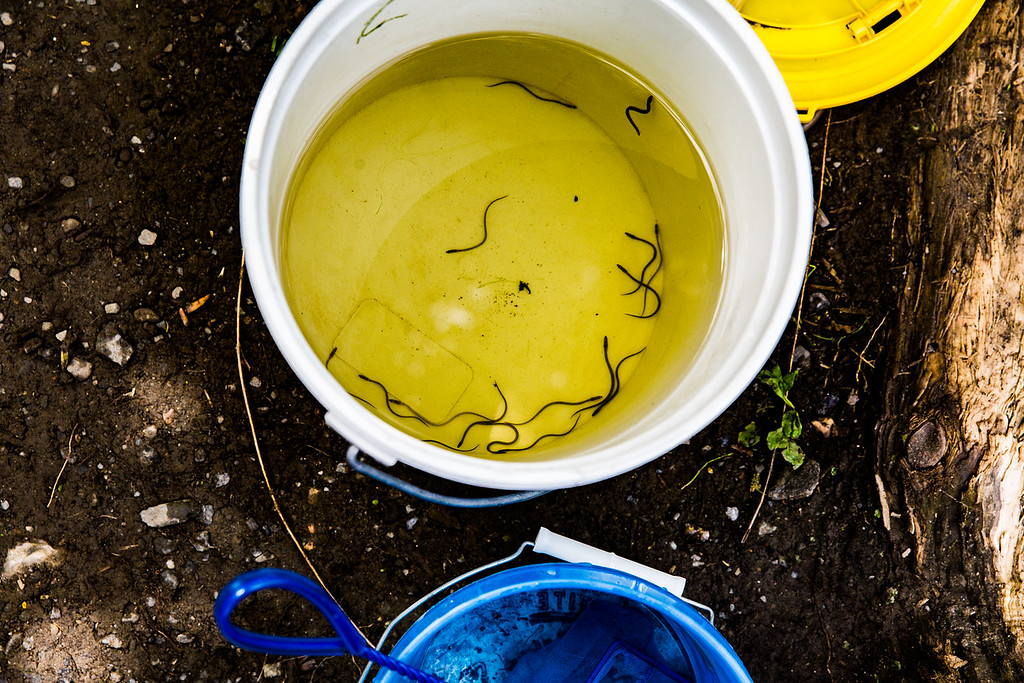New Windsor, NY
Earlier this year, students from The Storm King School got their hands dirty and their feet wet as they participated in the Eel Project, a long-term field study organized by the New York State Department of Environmental Conservation (NYSDEC). The 10 year-long study of American Eel populations aims to gather important data about this endangered, migrating species that inhabits estuaries in the Northeast.
During the project, teams of scientists, students, and community volunteers collect glass eels using specialized nets and traps along the Hudson River and other estuaries. The juvenile fish are counted, weighed, and released, and other environmental data is recorded on a daily basis. At the end of each season the data is compiled and evaluated.

Glass eels are weighed and counted, then transported upstream
One of the 14 sites for data collection in New York State is nearby Quassaick Creek, a tributary of the Hudson River located in New Windsor, NY. In early spring, large, cone-shaped nets, called Fyke nets, were placed in the water to capture the tiny glass eels swimming upstream. Storm King students visited the creek over six Tuesdays in March through May to help out as part of SKS’ Community Service Program.
Wearing their hip boots and coveralls, our young environmentalists didn’t hesitate to pull the water-logged nets around in the cold, murky water and reach deep inside to capture the tiny eels. One by one, they counted and weighed the eels then put them into containers to be transported further upstream. Other students with clipboards were busy on dry land recording environmental data such as air and water temperature. “They feel very light and kind of slimy, but I wasn’t afraid to touch them” said junior Tamar McGowan. “I never thought that eels could be important before,” said Tiana Vazquez, another SKS junior. “But they are actually an important part of the environment here. I hope they grow even bigger upstream,” she said.

Tamar McGowan, Tiana Vazquez, Cole Neville & Vicky Liu
THE EEL PROJECT
The Eel Project is an ongoing research initiative coordinated by the NYSDEC Hudson River Estuary Program and the Hudson River National Estuarine Research Reserve, in partnership with the Water Resources Institute at Cornell University. According to NYSDEC, the project relies on the participation of students and volunteers who have the chance to experience their local ecosystem firsthand, and collect important information and relevant data about this migrating species. Participants gain valuable field experience, study important species in the living environment, work with local communities, and can earn recommendations from DEC staff.
According to NYSDEC, the Hudson River Eel Project began in 2008 with only two sites in New York State. By 2017, the project expanded to 14 sites stretching up the Hudson from New York City to Albany County, and employed over 550 volunteers. “Over the 10 years, the Eel Project has caught and released over 450,000 glass eels, helping these animals access better habitat,” said NY DEC’s Citizen Participation Specialist and Educator Sarah Mount. NYSDEC also points out that one of the key educational aspects of the project is bringing the data back to classrooms to have students interpret and learn from it.

Tamar McGowan, Tiana Vazquez, and Vicky Liu counting eels
ABOUT THE AMERICAN EEL
The American eel is a migratory fish that hatches in the Atlantic Ocean in the area near what is called the Bermuda Triangle. Thousands of tiny, transparent “glass eels” miraculously swim the distance to enter North American estuaries, like the Hudson River, every spring. Once they arrive, they begin to gain pigment and become a lasting part of the local ecosystem for years to come. Unfortunately, the species is in decline over much of its range throughout the Northeast. Population studies like the Hudson River Eel Project are crucial for managing the preservation of the species in the future according to the NYSDEC.

These lucky eels are taken upstream
